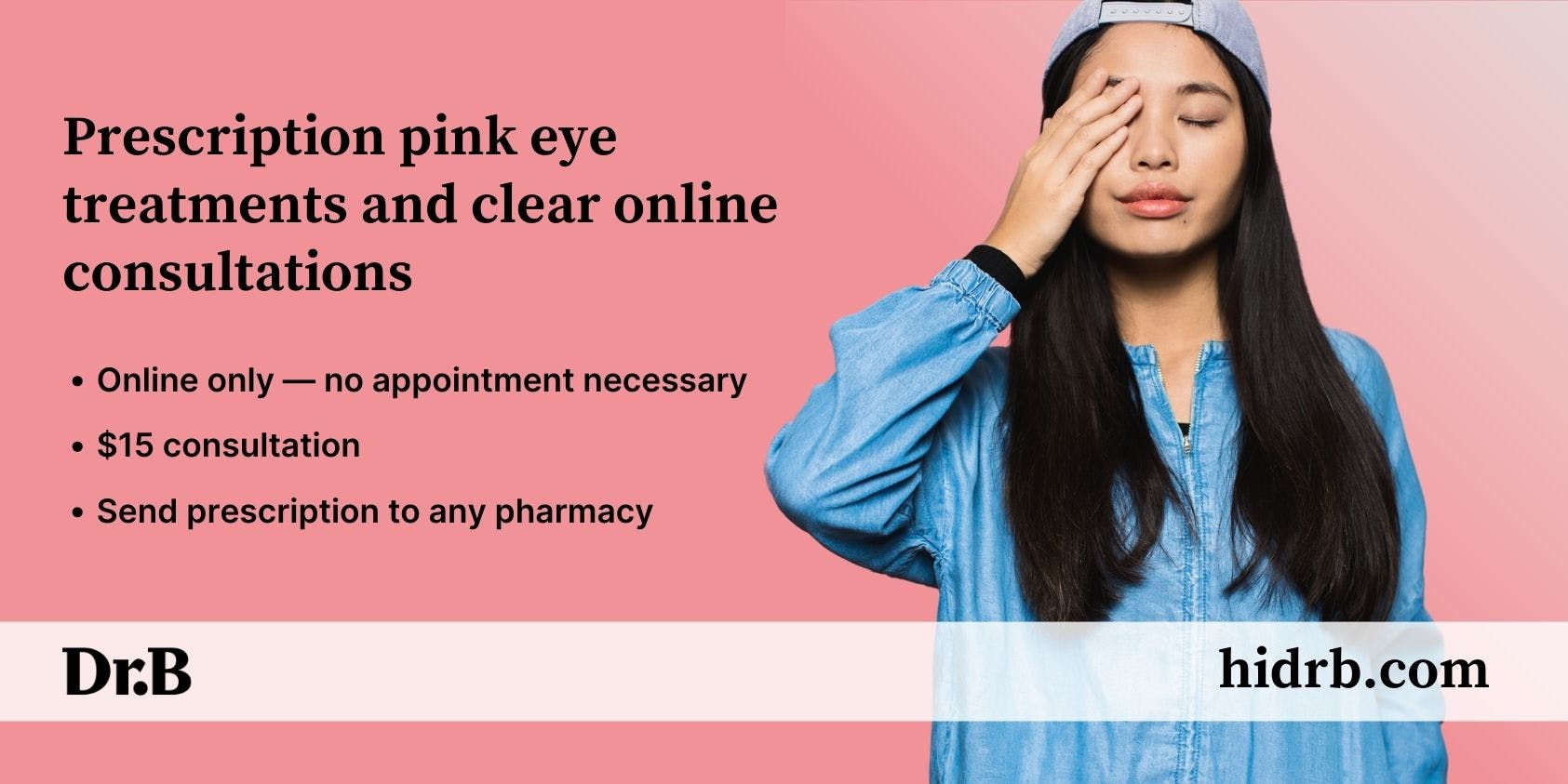
Can you get pink eye from a fart?

Key Points
- No, you can’t get pink eye from a fart. But you can get it from poop, so it’s essential to wash your hands often—especially after using the bathroom.
- There are different types of pink eye (also known as conjunctivitis). Pink eye can be caused by viruses, bacteria or allergies.
- Most cases of pink eye get better on their own. Antibiotics can help clear up bacterial conjunctivitis more quickly.
Pink eye is no fun. Symptoms of pink eye include red, watery eyes. You might also have a crusty, yellowish discharge or wake up with your eyes crusted shut. Sometimes, your eyes can feel gritty, tender or sensitive.
The condition is common in children, but adults can develop it, too. And different kinds of pink eye can be caused by allergies, viruses or bacteria—including bacteria that might be in poop!
But can you get pink eye from a fart?
Keep reading to learn how you can (and can’t) get this common condition.
And while symptoms usually go away on their own in a week or two, antibiotics can help heal some kinds of infections faster—which means they help stop pink eye from spreading. Want to get prescription treatment online? Start a $15 consultation—no painful video chat required.
What causes pink eye?
Pink eye (or conjunctivitis) is caused by bacteria, viruses, allergies and other irritants.
Viral pink eye is common after a respiratory infection like the common cold or the flu. This type usually gets better on its own in a week or two. And because it’s a virus, antibiotics won’t help cure it.
Allergic conjunctivitis is related to allergies. Eye drops, allergy medications and avoiding allergic reaction triggers can help manage this type of eye irritation.
Bacterial conjunctivitis is the only kind that gets better with antibiotics. Bacterial pink eye has some tell-tale symptoms, including:
- Waking up with both eyes crusted over
- Eye grittiness
- Feeling like something is in your eye
- Yellowish eye discharge
Can farts cause pink eye?
If you’ve seen the movie Knocked Up, you might remember how Seth Rogan’s character learns his friends caught pink eye after farting on each other’s pillows. As hilarious (and gross) as this sounds, it’s a myth—you cannot get pink eye from a fart.
Why not?
The average human produces over a liter of flatulence (farts) every day. Farts contain a combination of methane, nitrogen, carbon dioxide and other gases. These gases are produced when bacteria like E. coli digest food particles in the intestines. (Some medications and health conditions can also make you gassy.)
Pink eye is not caused by gases but usually by bacteria and viruses—and some germs that can irritate your eyes are found in poop. So while you can’t get pink eye if someone farts on your pillow, you can get pink eye if you don’t wash your hands after using the bathroom.
Bottom line? Be sure to wash your hands after using the bathroom or before touching your eyes.
How to prevent pink eye
Pink eye is very contagious. Because the viruses and bacteria that cause are often spread by touch, it spreads quickly in daycares, offices and schools. So it’s important to practice good hygiene to avoid conjunctivitis.
Here’s how to protect yourself:
- Wash your hands frequently, especially after using the bathroom
- Avoid touching your eyes
- Always wash your hands before putting in contact lenses
- Never share makeup or eye products with others
- Avoid allergy triggers
- Stay away from others who are sick
Is it pink eye, or…?
Other conditions can cause red, watery eyes. So if your condition isn’t improving in a few days—or if you have vision changes—see an eye doctor.
Other possible causes for your symptoms include:
- Dry eye: a problem making tears
- Blepharitis: an infection of the eyelids or eyelashes
- Corneal abrasion: when your eye is physically hurt by an object
- Subconjunctival hemorrhage: bleeding in your eye, which can be caused by anything from a forceful cough to high blood pressure
- Glaucoma: problems with the pressure inside your eye
Some of the above are no big deal and get better on their own. Others need specialized treatment to avoid vision loss. So if you—or a newborn baby—experience any severe symptoms or have complicating factors, see a provider immediately.
Such symptoms and complications include:
- Changes in vision, including blurriness or seeing halos of light
- Severe pain or redness
- Fever
- Sensitivity to light
- Symptoms that last more than a few days
- Swelling around the eye
- If you have other medical conditions that weaken your immune system, like HIV or cancer
How to treat pink eye
Pink eye usually gets better on its own in a few days, although symptoms can sometimes last one or two weeks. If there’s any discharge from the eye, stay home to avoid spreading the germs to others. In the meantime, be sure to wash your hands frequently and avoid touching your eyes.
To help relieve symptoms, you can try:
- A warm, wet washcloth over the eyes (just make sure it’s clean!)
- Cool compresses
- Ibuprofen or Acetaminophen for pain or fever
- Natural tears
- Stop wearing contact lenses and try glasses until you're feeling better
If your symptoms last more than a few days—or are really bothering you—talk to a medical provider. They can prescribe eye drops or ointments to help clear up some kinds of conjunctivitis.
Want to skip the waiting room and get prescription pink eye treatment online? Start a $15 online consultation with Dr. B!
We’ll connect you with a licensed provider. If appropriate, they’ll send a prescription to your chosen pharmacy within three working hours. We’ll even help you find the lowest prescription cost at your local pharmacies. No video meeting is required. So get on the path to clearer vision today!
Sources
Dunea G. (2004). The gas we pass. The British Medical Journal.
Centers for Disease Control. (2022). Conjunctivitis: treatment.
Centers for Disease Control. (2022). Conjunctivitis: causes.
Cronau, H., et. al. (2010). Diagnosis and management of red eye in primary care. American Family Physician.
Jacobs, D. (2023). Patient education: Conjunctivitis (pink eye). UpToDate.
Pink eye: what you should know. (2010). American Family Physician.
Sign up for the free Dr. B newsletter for a weekly report on the latest in healthcare + research-based advice for staying healthy and mentally well.


